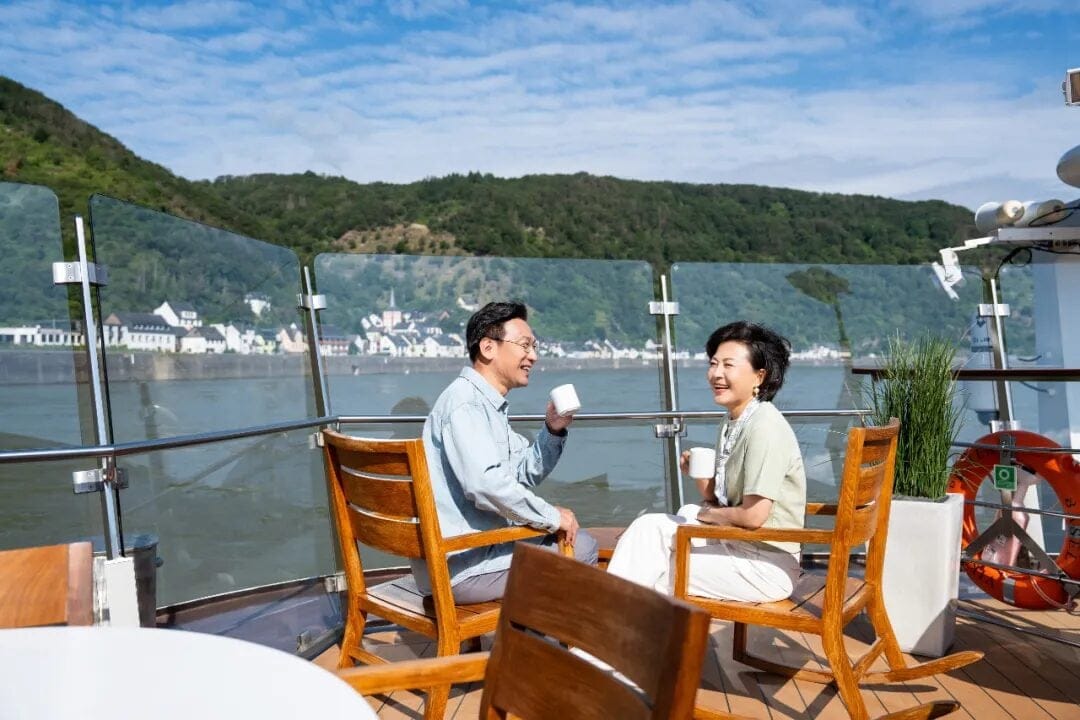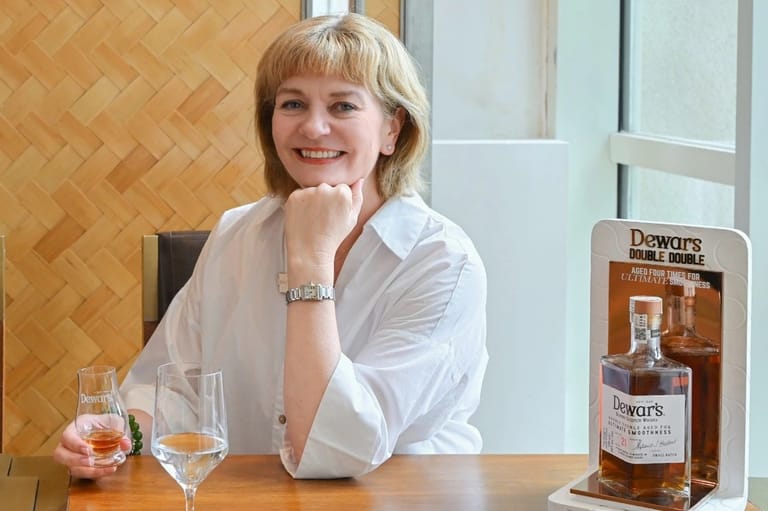Meet Tourism’s Growth Engine in China
By
Eva Liang

Published on
April 9, 2025

As China’s tourism sector steadily recovers, a growing force of “silver-haired” travelers is emerging as an undeniable market driver.
According to Dentsu Creative’s 2025 Silver Generation Trend Watch: The Second Adolescence, the “silver generation” refers to those born between 1960 and 1975 (ages 50 to 65). Shaped by collectivist values and rapid societal changes, they spent their early years striving for career and family success. Now, this cohort holds substantial household wealth, maintains low debt levels, and enjoys a relatively high level of education and cultural literacy.
With many already retired, they are now part of an enviable demographic—affluent and time-rich. Naturally, travel has become a key avenue for this group to enjoy their “second act.” Data from Trip.com shows that in 2024, travel bookings by silver-generation users increased by over 22 percent compared to 2023. Additionally, 31 percent of them now travel at twice the frequency they did in 2019. This demographic is no longer a niche—it’s becoming a core segment in the tourism economy, meriting close attention.
Willing to Spend for Quality
In their younger years, the silver generation was often constrained by limited resources and busy schedules, leaving little room for leisure. Now with both time and disposable income, they are eager to make up for missed experiences through travel and cultural engagement.
Unlike younger consumers, who are often cutting back, silver travelers tend to be more generous with their travel budgets. This “compensatory consumption” behavior is characterized by frequency, quality, and a willingness to spend. According to JD.com’s 2024 Silver Generation Consumption Report, 37.5 percent of this demographic plans one to two leisure trips annually, while 31.8 percent take three or more trips. Notably, 44.9 percent say they “won’t compromise on quality and are willing to spend on a better lifestyle.” Trip.com reports that users aged 50 and above have 30 percent stronger purchasing power than the platform’s average, showing a marked preference for four- and five-star hotels.

Jingzhi Chronicle’s Luxury Through a New Lens: 2025 Jingzhi China Vision Report further points out that travel and wellness are reshaping the lives of those aged 50 to 65. For this group, retirement doesn’t mean slowing down—it means exploring new frontiers. Local lifestyle platforms are playing a vital role in planning and enriching their journeys.
Tan Wee Hoon, Senior Vice President of Product Development & Marketing at Viking China, told Jingzhi Chronicle, “Our core customers are well-educated, financially stable retirees from first- and second-tier cities, along with their children. Nearly 70 percent of our guests are over 55. They value culture, history, art, and music, and are willing to pay for quality experiences.”
Cruises and luxury trains are especially popular among this segment for their comfort and ease. One Shanghai-based traveler, Shenglei Zhang, age 58, is an avid cruiser. After retiring, she spent over four months visiting 26 countries aboard an MSC cruise.
“I now travel off-season to avoid crowds and choose destinations based on the weather,” she said. “I no longer want exhausting itineraries. I prefer relaxed, scenic journeys where I can savor the food and enjoy the view. Cruises offer exactly that.” During the 2024 Chinese New Year holiday, cruise bookings on Trip.com jumped 357 percent year-on-year, with bookings by travelers over 50 nearly doubling.
Redefining Aging with Vitality
Contrary to the stereotype of the conservative older generation, today’s silver travelers are dynamic and digitally savvy, with lifestyles that increasingly resemble those of younger consumers. Many actively engage in online entertainment, embrace new hobbies, and demonstrate remarkable adaptability.
The 2024 Silver Generation Consumption Report reveals that 60.7 percent of the demographic spends over three hours a day online, while only 2.6 percent rarely go online. Online shopping, news, digital payments, and short videos are part of their daily routine. Dentsu Creative’s report highlights that platforms like Douyin and Kuaishou are the most frequently used, while Xiaohongshu and Bilibili are also gaining traction, with usage up by 65.5 percent and 22.2 percent respectively.
These platforms have become crucial for travel inspiration. Xiaoning Yan from Taiyuan, who is approaching retirement, uses Xiaohongshu and Douyin for travel ideas. She discovered options like the transcontinental K3 train and Antarctic cruises online and added them to her post-retirement plans. “It’s refreshing and relaxing,” she said. “You can enjoy sunrises, sunsets, live music, movies, cards, and great food—all without the stress of traditional travel.”
In destination preferences, the silver generation increasingly mirrors younger consumers. Both groups favor local travel, enjoying city walks, hiking, and nature escapes. They are also drawn to mountain retreats and wellness activities like camping, meditation, and forest bathing.
Their mindset reflects a lifelong curiosity. Tencent’s 2024 Education Plus Bluebook notes that 83 percent of older learners participate in offline activities tied to their studies, and 49 percent join educational or cultural tours. Their thirst for knowledge is a major motivator for travel.

Self-driving is also gaining popularity. During the 2025 Chinese New Year holiday, silver self-driving tourists spent 7.2 percent more on average than younger groups, according to global car rental platform Zuzuche.
Strong Demand, Limited Supply
As China’s population ages, the silver travel market shows immense potential. The China Tourism Academy estimates that by 2025, travelers aged 60 and above will exceed 300 million trips annually, generating a market worth two trillion yuan. The China Research Center on Aging reports that this segment’s annual travel spending is growing at 23 percent—far outpacing other age groups.
Group tours remain mainstream, especially when children aren’t accompanying their parents. The 2024 China Silver-Age Tourism Report by CIC and Quantum Song shows only 7.2 percent of respondents prefer to travel alone. Still, 45.8 percent seek higher service standards, and many prefer combined models like “travel plus learning” (34.7 percent) or “travel, learning plus wellness” (33.2 percent).
In response, brands are beginning to tailor offerings. Viking Cruises has enhanced its services for this demographic with visa support, flight bookings, full Chinese-language service onboard, and dedicated concierge assistance. Understanding the local palate, the cruises offer extensive Chinese cuisine. Viking also added senior-friendly features on its WeChat mini-program.
Chinese private education provider New Oriental launched with offerings tailored to older travelers, including study tours abroad and at home. Chinese education company EF has introduced language-learning programs for those born in the 60s and 70s, allowing them to “return to campus” in retirement. Viking has even combined wellness and education, launching China’s first international “Silver Generation Learning & Wellness Cruise,” with masterclasses in music, dance, art, and photography.
Longer-term stays are also trending. With flexible travel times, retirees like Zhang and Yan prefer short-term stays in climate-friendly areas like Hainan, Guangxi, Guangdong, Yunnan, and Fujian. A report by Tongcheng Travel shows that silver travelers remain a core group for Hainan’s winter tourism, particularly for long-stay products. Insurance firms like Taikang and Ping An, real estate developers like OCT and Greenland, and hotel groups like Hilton, Junlan, and Ascott are all expanding into travel-residency services.
Challenges in Silver Travel
Despite rising demand, creating effective travel products for this demographic is no easy feat. Health and physical ability vary greatly—some seniors are robust and adventurous, while others require more rest and care. Dietary needs also differ; many prefer Chinese cuisine, but some require special diets, such as low-sugar meals for diabetics.
Customized group travel is often more suitable but comes with higher costs. As Yuying Hong, a cultural tourism professional, explains: “Silver-only tours are still rare, and the needs of this group are highly varied. That makes it hard to fill tours and keep them cost-effective. Small private tours work better, but they’re more expensive.”
The 2024 China Silver-Age Tourism Report found that many older consumers feel current options are too limited. Issues include a lack of tailored products, repetitive design, and inadequate infrastructure. Among those surveyed, 39.6 percent cited inconsistent service quality, 25.4 percent were dissatisfied with cultural content, and 24.8 percent felt transparency was lacking.
As the silver generation grows, so too does its market significance. But their diverse and complex needs pose new challenges for the travel industry. From accommodation and food to emotional and medical support, they seek both physical comfort and intellectual enrichment. Striking the right balance will be crucial to developing meaningful and sustainable silver travel products in the years ahead.












